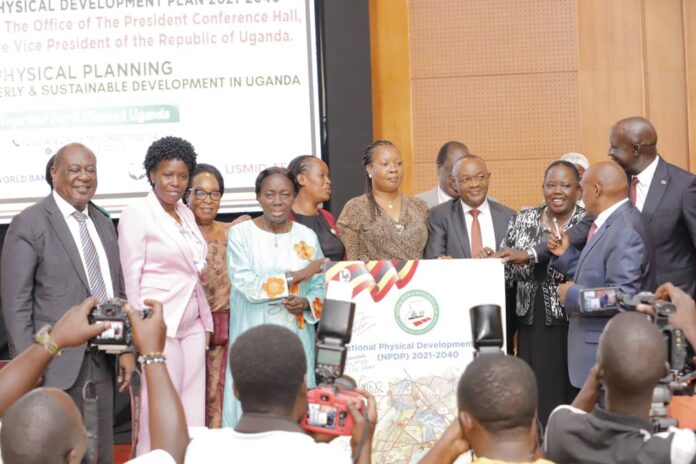The Minister for Lands, Housing, and Urban Development, Judith Nabakooba has revealed that Uganda’s urban population will hit 20million by 2030.
Launching Uganda’s first National Physical Development Plan (NPDP) in Kampala, Nabakooba emphasized the significance of the plan in guiding the country on the optimal utilization of its limited land resources, particularly in the context of Uganda’s journey towards becoming an industrialized, middle-income state.
Highlighting the importance of land as a non-renewable resource, she stressed the need for effective planning to ensure its sustainable use.
Noting the rapid urbanization in Uganda, she shared statistics indicating a 4.5% annual growth rate in urban areas, with the urban population projected to nearly double by 2040 from the current 11 million to over 20 million.
The NPDP aimed to address the lack of a comprehensive guiding plan for urban development, especially in newly elevated regional cities and urban centers across the country.
It also aimed to provide guidance in various sectors, such as agriculture and housing, to facilitate the transition from subsistence to commercial agriculture and to address housing challenges in urban areas.
The Minister underscored the plan’s role in promoting regional connectivity, enhancing industrialization, safeguarding protected areas, and addressing climate change effects.
She acknowledged the involvement of local government leaders in the implementation process and urged them to take ownership of the plan’s objectives.
She noted the relevance of having a National Physical Development Plan in Africa and pledged the her ministrys commitment to its thorough implementation and coordination at all levels of governance.
Hon. Raphael Magyezi, the Minister for Local government congratulated the government on this significant achievement.
He pledged commitment and support towards the implementation of the NPDP, emphasizing the need for effective implementation to influence the physical development and land use of the country.
Magyezi highlighted the responsibility of local governments to ensure the NPDP’s actualization through local physical development plans, emphasizing the complementary roles of the Ministry of Lands, Housing and Urban Development and the Ministry of Local Government in the country’s physical development and urbanization.
He reminded officials of their roles with respect to physical development planning, citing relevant laws and regulations.
The Minister urged Local governments to constitute Physical Planning Committees, develop and approve local physical development plans, and enforce plan enforcement mechanisms.
He emphasized the importance of organized development, environmental preservation, and the enactment of regulations to regulate physical development. He stressed the need for regular supervision and oversight of planning functions by local political leaders and monitoring by Resident District/City Commissioners.
He announced his Ministry’s provision of a physical planning grant to local governments starting from the next financial year, expressing gratitude to relevant ministries and associations for their efforts. He called for renewed commitment from development partners, civil society, and academia to provide assistance to local governments.
State Minister for Urban Development, Obiga Kania assured district leaders of government commitment to ensuring orderly, sustainable,organized urban and rural development through the enactment of the Physical Planning Act (2010) and related policies, regulations and strategies.
The National Physical Development Plan outlined the spatial strategic direction for orderly spatial development, focusing on land use, infrastructure networks, and human settlements to achieve social-economic transformation and the goals of Vision 2040.
The central objective of the NPDP was to guide spatial requirements for physical development plans, programs, and activities.
The Minister called upon all actors at individual, institutional, communal, religious, and governmental levels to contribute and take responsibility for achieving orderly development, emphasizing that physical planning must be accompanied by implementation.



